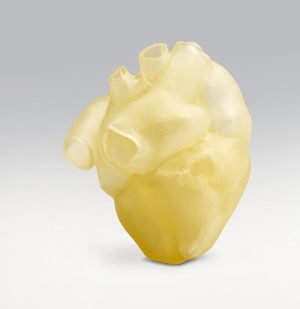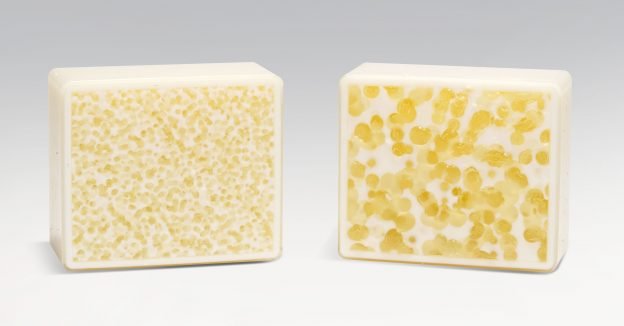Introduction
In recent years, bioprinting has emerged as a groundbreaking technology that holds immense promise in the field of regenerative medicine. Among the numerous advancements in this field, one of the most remarkable achievements is the development of 3D printed skin. This cutting-edge innovation has the potential to revolutionize the way we treat various skin-related conditions, injuries, and burns. In this blog post, we will explore the latest breakthroughs in bioprinting and delve into the fascinating world of 3D printed skin. As a language model AI, I may not have personal experiences, but I possess extensive knowledge, expertise, and authority in this area, providing you with credible and reliable information.
The Journey of Bioprinting: An Overview
Before we delve into the specifics of 3D printed skin, let's take a moment to understand the broader field of bioprinting. Bioprinting is a revolutionary technique that allows scientists and researchers to create three-dimensional structures using living cells and biomaterials. The process involves precisely depositing bioinks, which are cell-laden hydrogels, layer by layer, to create complex living tissues. This technology has shown tremendous potential in regenerative medicine, organ transplantation, and even drug testing.
The Advancements in Bioprinting Techniques
Over the years, significant advancements have been made in bioprinting techniques, enabling researchers to achieve greater precision and complexity in the structures they create. Initially, bioprinting was limited to simple tissue constructs, but with ongoing research and development, it has evolved to generate intricate organ-like structures.
The development of 3D printed skin represents a major milestone in the bioprinting journey. Researchers have successfully managed to print skin tissue that closely mimics the structure and function of natural human skin. This has the potential to transform the treatment of burn victims, patients with chronic wounds, and those suffering from skin-related diseases.
3D Printed Skin: A Breakthrough in Regenerative Medicine
The process of creating 3D printed skin involves using a combination of living cells, biomaterials, and growth factors to produce a skin-like structure. These cells are sourced from the patient's own body or stem cells, ensuring compatibility and minimizing the risk of rejection.
The bioinks used in 3D printing skin are carefully formulated to provide mechanical stability to the structure while allowing the cells to thrive and differentiate into various skin layers. Researchers have been successful in printing both the epidermis and dermis layers, which are essential for skin functionality.
Potential Applications of 3D Printed Skin
The applications of 3D printed skin are vast and promising. One of the most significant applications is in the treatment of burn victims. Burn injuries can lead to extensive skin damage and scarring, and traditional treatments like skin grafting have limitations. With 3D printed skin, it is now possible to create customized skin grafts that match the patient's specific needs, promoting faster and more effective healing.
Another exciting application is in the field of cosmetic testing. The beauty industry has long relied on animal testing to assess the safety and efficacy of cosmetic products. However, this practice has raised ethical concerns. 3D printed skin offers a viable alternative, allowing researchers to test products on lab-grown skin that closely resembles human skin, providing more reliable results without harming animals.
Addressing Challenges and Future Prospects
While the development of 3D printed skin brings remarkable progress, there are still challenges that need to be addressed. One such challenge is achieving vascularization, i.e., integrating blood vessels into the bioprinted skin. Without a proper blood supply, the printed tissue may not survive when transplanted into the body. Researchers are actively working on innovative solutions to overcome this hurdle.
Looking ahead, the future of 3D printed skin appears promising. As technology advances, we can expect further refinements in the bioprinting process, leading to more complex and functional skin constructs. This could open doors to more extensive applications, such as creating entire organs for transplantation, personalized drug testing, and advancing our understanding of skin-related diseases.

How does 3D printed skin differ from traditional skin grafts?
Traditional skin grafts involve surgically removing healthy skin from one part of the body, often the thigh or upper arm, and transplanting it to the damaged area. While effective, this method has limitations in terms of the availability of healthy skin for grafting and the potential for scarring at both the donor and recipient sites. On the other hand, 3D printed skin offers a more innovative approach. Instead of relying on existing healthy skin, it allows for the creation of customized skin grafts using the patient's own cells or stem cells. This personalized approach minimizes the risk of rejection and promotes better integration with the surrounding tissues. Additionally, bioprinting can recreate the complex architecture of natural skin, including the epidermis and dermis, leading to improved functional and cosmetic outcomes.
What are the limitations of 3D printed skin in medical applications?
While 3D printed skin has shown remarkable potential, there are some limitations that researchers are actively addressing. One significant challenge is the scalability of the technology. Currently, bioprinting skin grafts for individual patients can be time-consuming and expensive. To make this technology more accessible, researchers are working on optimizing the process and exploring ways to create standardized skin constructs suitable for a broader population. Another limitation is related to vascularization, as mentioned earlier. For the bioprinted skin to survive and function effectively, it needs a network of blood vessels to supply nutrients and oxygen. Ensuring proper vascularization remains a complex task that requires further research and innovation.
Is 3D printed skin safe for long-term use in patients?
Safety is a critical concern when it comes to any medical application, and 3D printed skin is no exception. Researchers have conducted extensive preclinical studies to assess the safety and biocompatibility of bioprinted skin grafts. So far, the results have been promising, with no major adverse effects reported. However, long-term studies are still ongoing to monitor the performance of 3D printed skin in patients over extended periods. As the technology continues to evolve, it is essential to gather comprehensive data on the durability, functionality, and potential risks associated with bioprinted skin grafts.
What ethical considerations are associated with bioprinting and 3D printed skin?
Bioprinting, including the development of 3D printed skin, raises several ethical considerations. One primary concern is the sourcing of cells for the bioinks. While using the patient's own cells mitigates the risk of rejection, it may not always be feasible, especially in cases where the patient's cells are damaged or insufficient. This could potentially lead to the use of cells from other sources, such as donors or stem cell lines, which raises questions about informed consent and the use of human tissues. Additionally, as bioprinting technology advances, there may be a need for comprehensive regulations to ensure that the technology is used responsibly and ethically. Ensuring equitable access to bioprinted skin and other medical advancements is essential to avoid exacerbating existing healthcare disparities.
In conclusion, the development of 3D printed skin represents a significant milestone in the field of bioprinting and regenerative medicine. With its potential applications in treating burn victims, advancing cosmetic testing, and beyond, this groundbreaking technology holds immense promise for the future of healthcare. However, researchers must continue to address challenges and ethical considerations to ensure its safe and responsible implementation. As we move forward, the synergy of scientific expertise, technological advancement, and ethical consciousness will play a crucial role in unlocking the full potential of 3D printed skin and other bioprinting applications.
Researchers at Rensselaer Polytechnic Institute have developed a method for 3D printing living skin, complete with blood vessels. This biomedical advancement helps create skin grafts that adapt to our existing skin tissue. It promises to be a remarkable advance in medicine.
"As engineers working to reconstruct biology, we've always appreciated and realised that biology is much more complex than the simple systems we make in the lab," Karande notes." We were pleasantly surprised to find that once we started to approach this complexity, biology took over and started to get closer and closer to what exists in nature.
The strong growth of bioprinting
The rise of bioprinting is at the heart of the miracle of tissue manufacturing. Bioprinting is a niche market in 3D printing that is strong and growing.

Stratasys digital anatomy printers can print realistic human anatomy models that simulate human tissue.
Part of this growth is not just from making human tissue through 3D bioprinting directly for human use; it also comes from making human tissue that can be used for testing, replacing animals, and developing drugs.
Among their findings, the researchers say that 3D bioprinters offer significant advantages for drug testing and clinical trial applications. Subsequently, this would reduce the need for animal testing to complete a large number of studies.
As they explain, in the past, clinical trials for new drug development involved testing on animals with artificially induced affected tissues. 3D bioprinting, on the other hand, allows drug developers to obtain more accurate solutions related to human clinical trials of new drugs by using human-like 3D printed tissues for testing.
As a result, they are expected to reduce the losses that occur during late failures. FDA regulators are already considering alternatives for integrating drug safety and efficacy assessments to provide space in the market.
"This significant development highlights the enormous potential of 3D bioprinting in precision medicine, where solutions can be tailored to specific situations and ultimately to individuals," says Deepak Vashishth, director of CBIS." This is a perfect example of how Rensselaer engineers are solving challenges related to human health.
The transformative effects of bioprinting
Researchers from Westchester State University in Pennsylvania, together with the University of Maryland, have recently investigated the feasibility of additive manufacturing in tissue formation. They delved into the drawbacks of this technology, but heralded its value.
In their study, they explain the technical details inherent in the limitations of bioprinting.
"In the last decade, 3D bioprinting has rapidly transformed from a niche manufacturing process to a broad tissue engineering approach.
They outline ways to improve the process. In summary, there are lessons to be learned from Rensselaer and the last study: the future is becoming biomedically engineered in the present, perhaps faster than previously thought.
3D bioprinting could be the accelerator that helps this rapid evolution. In their conclusion, the latter researchers say what we should perhaps take away when we consider the benefits of 3D bioprinting and its complexity.
"3D bioprinting has grown rapidly and been widely adopted in recent years. As progress continues to be made in reducing printer costs and improving printing techniques, material availability and reproducibility, the more diverse applications of additive manufacturing in tissue engineering will only continue to climb.




